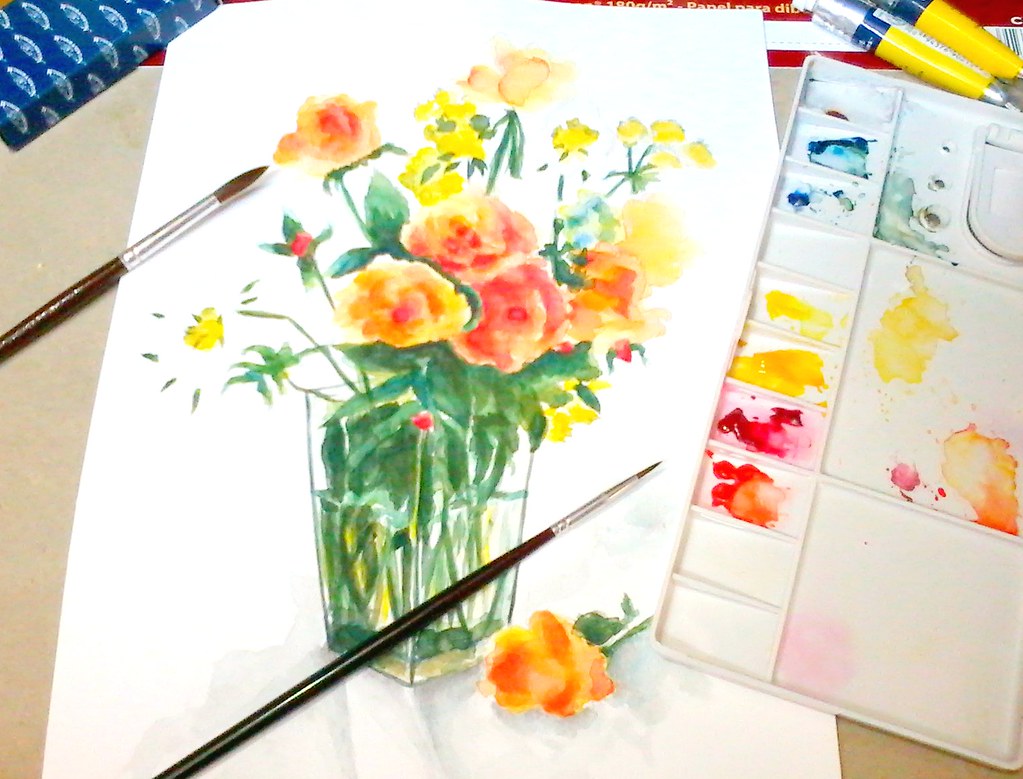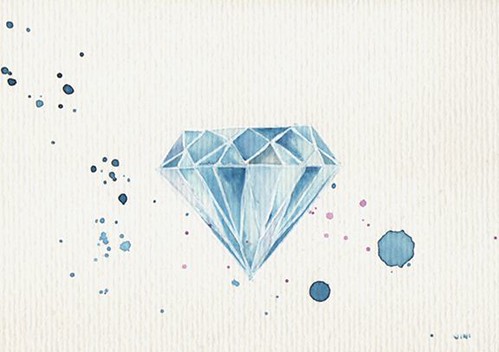
«Vase with watercolors» by Aracelyasmine is licensed under CC BY-NC-ND 2.0
Many painters throughout history have been seduced by the art of watercolor. And it is that, this technique, can create beautiful works of art very easilyIt is a material with great creative possibilities.
But what is it made of? Watercolor is made up of pigment, a small amount of binder (which is usually rubber), and a lot of thinner (water). If you want to know more about the composition of the different paintings, don't miss this previous post.
The ideal medium to start painting with watercolor is paper. There is a great variety of papers, the important thing is that they can absorb water well, so they must be of high grammage, from 190 grams. The higher the grammage, the more they will withstand the water. In addition, depending on its texture, there are three types of suitable paper:
Cold pressed paper: provides a lot of texture as it is semi-rough.
Hot pressed paper: hard and smooth surface, which makes the watercolor quite slippery.
Rough paper: of great granulation, obtaining a mottled appearance when applying the paint.
Depending on what you want to create, you should use one or the other.
Next we are going to know some basic techniques that you can use to make spectacular paintings in a simple way.
Flat wash or flat wash

“#71” by ViviRibS is licensed under CC BY-NC-SA 2.0
It is the most used technique in watercolor. The mere fact of dipping the brush in water and then in the paint to take it to the paper is a wash. That simple If you want to create a more transparent effect, you must load the brush with more water. For more saturated colors, just load less water and more pigment. The possibilities are endless.
Wet on dry or wet on dry
First a flat wash is done and, when it dries, another layer is applied, in such a way that a transparency is created, being able to see the layer below.
Wet on wet or wet on wet
We first do a flat wash and, before it dries, we take another color and paint in such a way that it more or less overlaps the first. The colors will blend together creating beautiful effects.
Gradient wash or graded wash
This type of technique shows us the transition from a more saturated watercolor to a more luminous one. To do it correctly, we must first take a lot of pigment and little water, creating a line at one end of the paper. Later we take less pigment and more water, creating another line that joins the previous one at its edge. Both will merge. We gradually take on less pigment and more water, thus creating a nice gradient effect.
Dry brush or dry wash
With a minimum water load (the brush being practically dry) and enough pigment, we can paint on the paper in such a way that its texture will be very marked.
Next we will see other complementary tools that we can use in our watercolors.
Use of salt
Salt creates really amazing effects in watercolor. To use it correctly, we first do a flat wash and put salt in a dispersed way before the paint dries. Once completely dry, we can remove the salt. The effect is ideal for painting, for example, the universe.
Use of ethyl alcohol or rubbing alcohol
Ethyl alcohol also creates interesting effects in watercolor. With the help of a swab, we apply it on the wet paint (flat wash technique). What will happen is that both substances will repel each other, creating depigmented areas and others with more pigment.
Using a needle or scraper
With the watercolor still wet, we scrape with the needle or other utensil that can create stripes. In this way we can, for example, draw the lines of the leaves of a plant.
Use of plastic
Using a previously wrinkled plastic sheet, we can give texture to a wet paint by giving it small touches. The plastic will pick up paint from the paper, creating an interesting effect.
And you, what are you waiting to try all these techniques?